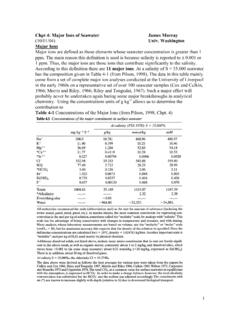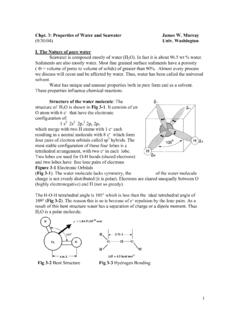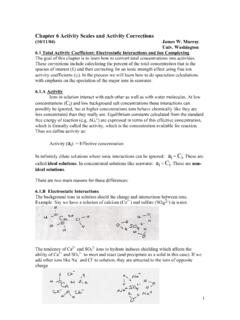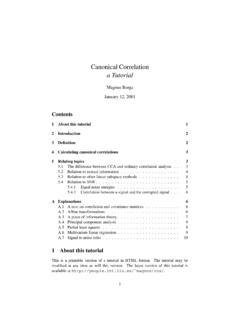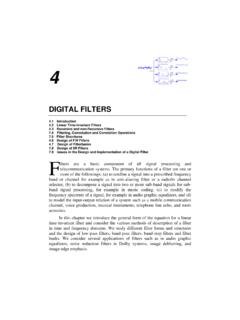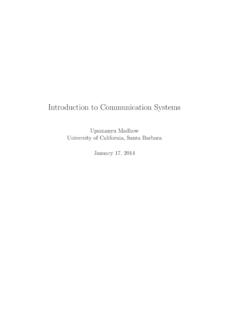Transcription of 8. Cross-Correlation Cross-correlation
1 ESS 522 2014 8-1 8. Cross-Correlation Cross-Correlation The Cross-Correlation of two real continuous functions, xy is defined by xyt()=x t()y () d (8-1) If we compare it to convolution xt()*yt()=xt ()y () d (8-2) we can see that the only difference is that for the cross correlation, one of the two functions is not reversed. Thus, xyt()=x t()*yt() (8-3) In the frequency domain we can write the Fourier transform of x(-t) as FTx t() =x t()exp i2 ft() dt (8-4) Substituting t = t yields FTx t() = xt'()expi2 ft'() dt'=xt'()expi2 ft'() dt'=X*(f) (8-5) time reversal is the same as taking the complex conjugate in the frequency domain.
2 We can thus write xy=FT xyt() =X*f()Yf() (8-6) Unlike convolution, Cross-Correlation is not commutative but we can write xyt()= yx t() (8-7) You can show this by letting = - t In the discrete domain, the correlation of two real time series xi, i = 0, 1, .., M-1 and yj, j = 0, 1, .., N-1 is by analogy to equation (8-1) given by xy,k=xj kyjj=max0,k()minM 1+k,N 1() ,k= M+1(),..,0,..,N 1() (8-8) In Matlab cross- correlations are computed with the function xcorr which works in the frequency domain. Note that to obtain the discrete version of xy as defined by equation (8-8), one reverses the arguments ( , one calls phixy = xcorr(y,x)).
3 Xcorr also pads the end of the shorter input with zeros so that they are the same length. Since Matlab cannot have zero or negative indexes the cross correlation sample with zero lag is the central element in the output vector. An alternate way of doing the cross correlation without padding with zeros is using the conv command (phixy = conv(y,x(end:-1:1))) ESS 522 2014 8-2 Autocorrelation Autocorrelation is the result of cross-correlating a function with itself. Equation (8-1) becomes xxt()=x t()x () d (8-9) and equation (8-4) becomes xx=FT xxt() =X*f()Xf()=Xf()2 (8-10) From the expression of the Energy used in the derivation of Parseval s theorem (equation 7-9) we can see that energy is given by the zero lag autocorrelation xx0()=x ()2 d =Xf()2df =E (8-11) Normalized Cross-Correlation In seismology we often use correlation to search for similar signals that are repeated in a time series this is known as matched filtering.
4 Because the correlation of two high amplitude signals will tend to give big numbers, one cannot determine the similarity of two signals just by comparing the amplitude of their cross correlation. The normalized correlation for two time series can be defined as xyt()= xyt() xx0() yy0() (8-12) the normalized quantity xyt() will vary between -1 and 1. A value of xyt()=1 indicates that at the alignment t, the two time series have the exact same shape (the amplitudes may be different) while a value xyt()=-1 indicates that they have the same shape except that they have the opposite signs.
5 A value of xyt()= 0 shows that they are completely uncorrelated. In practice when one applies this normalization to real discrete signals, one will find that a correlation coefficient greater than about or indicates a pretty good match.


